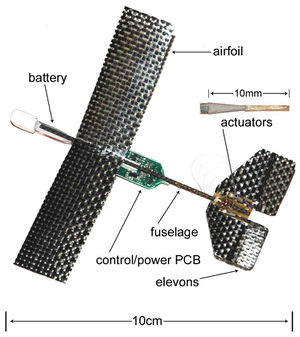Difference between revisions of "Media"
Jump to navigation
Jump to search
| Line 4: | Line 4: | ||
| style="width:50%"| | | style="width:50%"| | ||
== Paparazzi in the News == | == Paparazzi in the News == | ||
* [http://www.videoportal.sf.tv/video?id=4152d8b8-6928-4c64-9186-58c18b10ba1c UAVs in wind parks] | |||
*:<small>Paparazzi measures wind vectors/turbulences around wind turbines for a more efficient planning of wind parks. The goal is to reduce the impact that a turbine causes to the ones downstream. TV coverage in Swiss-German. | |||
</small> | |||
* [http://hjnews.townnews.com/articles/2008/07/12/news/news01.txt ‘Ghetto’ plane soars] | * [http://hjnews.townnews.com/articles/2008/07/12/news/news01.txt ‘Ghetto’ plane soars] | ||
*:<small>When a group of USU students arrived at a national robotic airplane contest, judges said their entry would never fly. | *:<small>When a group of USU students arrived at a national robotic airplane contest, judges said their entry would never fly. | ||
Revision as of 12:46, 20 September 2010
Paparazzi in the News
|
Design Reports
Manuals
|
Other Sites of Interest
- "Design, Fabrication and Initial Results of a 2g Autonomous Glider"
(900K, PDF) - July 2007- Utilizing the core technologies of emerging microrobotic structures, the rapid design and prototyping of a passive micro air vehicle with the final goal of locating an audio source while avoiding hazardous obstacles is presented. The airfoil and control surfaces are optimized empirically to maximize lift and maneuverability while minimizing drag. Bimorph piezoelectric bending cantilevers actuate the control surfaces. Since such actuators require high voltages, an efficient boost circuit is presented along with appropriate high voltage electronics. To locate audio sources, a pair of acoustic sensors is designed and prototyped using a phase detection algorithm while a custom optic flow sensor is developed to avoid obstacles and give estimates of object distances and velocities. Finally, each subsystem is demonstrated and the complete glider is integrated to demonstrate initial open loop control performance.
